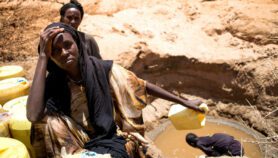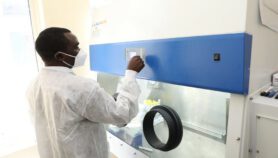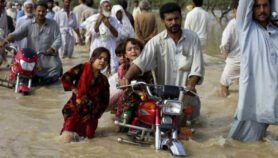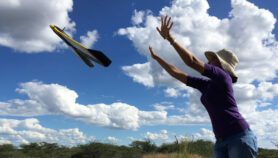By: Linda Nordling
Send to a friend
The details you provide on this page will not be used to send unsolicited email, and will not be sold to a 3rd party. See privacy policy.
Linda Nordling charts the science policy trends of the past year — and looks ahead to a new 'decade for science'.
When 2010 dawned there were some hopeful signs for African science, despite setbacks in the previous year — notably, the African Union (AU) commissioner for science and technology (S&T) announcing in October 2009 that his department was broke.
Egypt, one of the continent's strongest economies, was set to take over from Kenya as chair of the African Ministerial Council of Science and Technology (AMCOST). Joining the AMCOST bureau was another African powerhouse, South Africa, bringing high hopes for a 'dream team' that would revive the continent's science plans.
And there were milestones in 2010 for African science policy. This was the target year for a pledge by African presidents to allocate 1 per cent of their countries' gross domestic product (GDP) to S&T. It also marked the five-year anniversary of the Gleneagles G8 summit of 2005, when world leaders vowed to double their contributions to development aid.
Did the year live up to its expectations? The short answer is no. Neither of these goals has been met. And a major postgraduate training programme failed to flourish under the new AMCOST leadership.
Continental drift
Nobody really believed that the goal of 1 per cent GDP for S&T was achievable — even when countries signed up to it in 2007. An increase in African science budgets by at least ten-fold may sound good in a heads-of-state document, but made little sense in practice. Most African countries are many years away from having the training and funding systems that could absorb such an influx of funding and turn it into useful science.
As for Gleneagles, the world has changed since that commitment was made. The financial crisis has revised the economic world map. Traditional aid partners — Europe and the US — are now losing ground to emerging economies like India and China.
And progress stalled for the Pan-African University (PAU), the AU commission's flagship programme — a continental network of postgraduate training programmes based in the five regions of the continent.
Libya and Algeria wrestled to host the northern node of the network, which will focus on water science. In the South, plans to open up the regional node to students in January 2010 have yet to bear fruit after questions were raised about the allocation of the node to Stellenbosch University in South Africa.
The foot-dragging might be a consequence of a stronger AMCOST, which typically enters the decision-making process at a late stage to weigh in on pan-African plans like the PAU. While AMCOST often voices concern about the free rein the AU has in developing continental science policy, until now attempts to keep it in check have been modest.
The AU Commission has been accused before of going over the heads of national policymakers. But it has often had to act without much engagement from AMCOST — the ministerial science meetings are notorious for bad attendance.
And the continent has fallen behind on these meetings. The fourth biennial AMCOST meeting, due in the last quarter of 2009, only took place in March 2010. The AMCOST bureau meeting, expected towards the end of 2010, is still pending.
This state of affairs may be politically messy in the short term, but should yield better policies in the long run. The AU commission needs its member states to give it legitimacy — without national backing, the continent's joint policies won't take shape. Closer national support for pan-African science projects is high on the AU's wish list.
Trusting in nations
If 2010 was the year when continental science policymaking came up short, it was also the year when a handful of individual nations' commitments to science grew encouragingly.
Uganda and Tanzania unveiled science-friendly national budgets in June. Even Angola has issued a draft S&T policy, which was approved by stakeholders in the capital Luanda in November.
The Tanzanian government increased the allocation for its Commission for Science and Technology by thirty-fold. This will only marginally raise the percentage of GDP spent on S&T, showing the 1 per cent S&T funding commitment for the pipedream that it was.
But the money will kick-start a reform of Tanzania's old-fashioned funding mechanisms, where seniority currently outranks ingenuity.
And it signals a growing realisation in African governments that how research funding is spent is at least as important as how much of it there is.
A decade for science?
2011 could see more of the same. With rich countries still reeling from the financial crisis, aid is likely to remain a low priority. African countries know this, and are making plans to reduce their aid dependency.
At the continental level, 2011 is meant to be the start of an African 'decade for science'. But rather than making new plans, perhaps AMCOST's priority should be to review the ones it has on the table, to make sure they are practical in the new challenging financial climate.
Still, I am convinced that the continent's greatest hope lies with its nations. If the countries that have begun investing in science keep at it — and if the money is invested wisely — the effects will start to show.
That may not happen in 2011, but soon enough. And once these countries pull ahead, reaping the benefits of their investment, others might be encouraged to follow suit.
A decade for science? Let's hope so.

Journalist Linda Nordling, based in Cape Town, South Africa, specialises in African science policy, education and development. She was the founding editor of Research Africa and writes for SciDev.Net, The Guardian, Nature and others.













